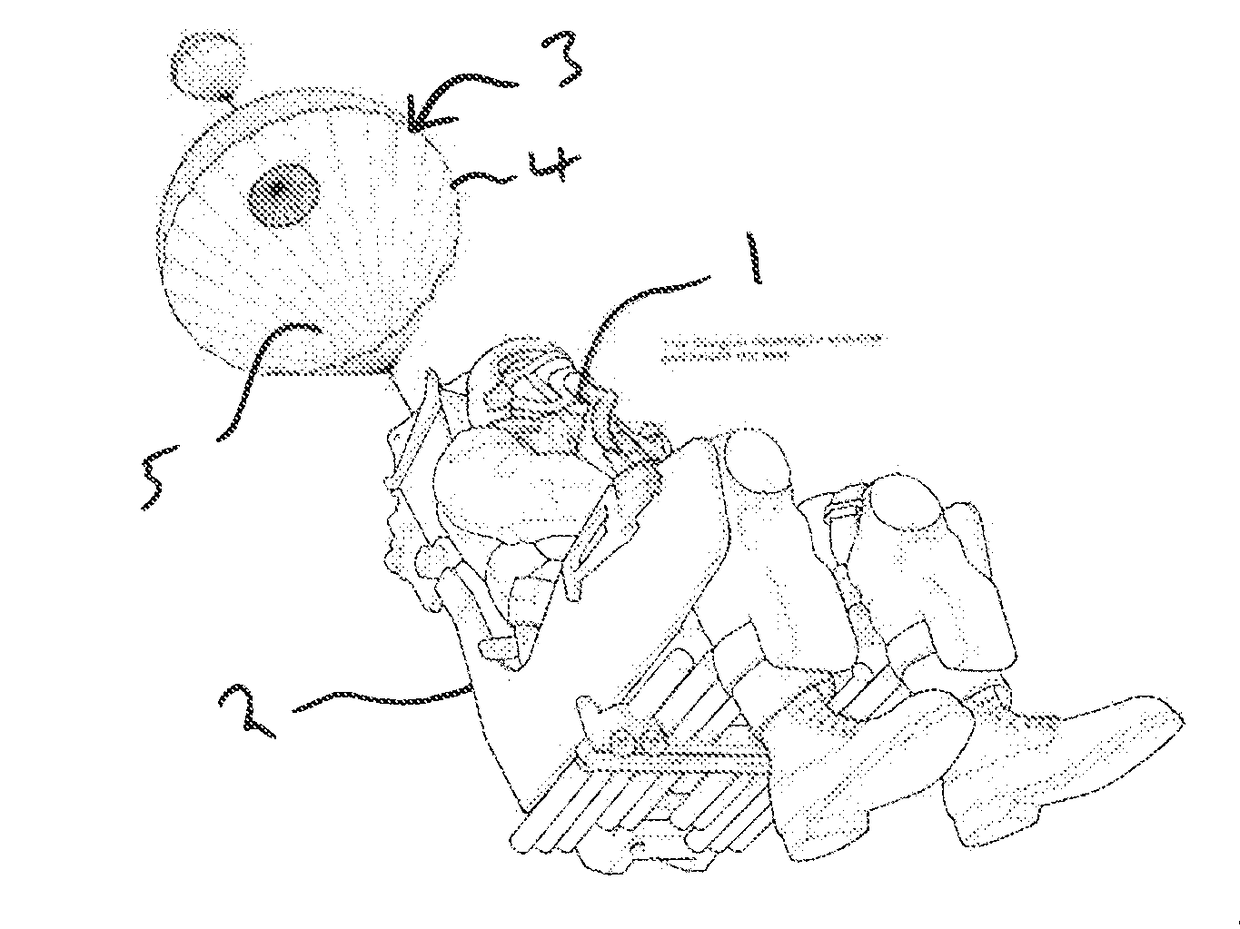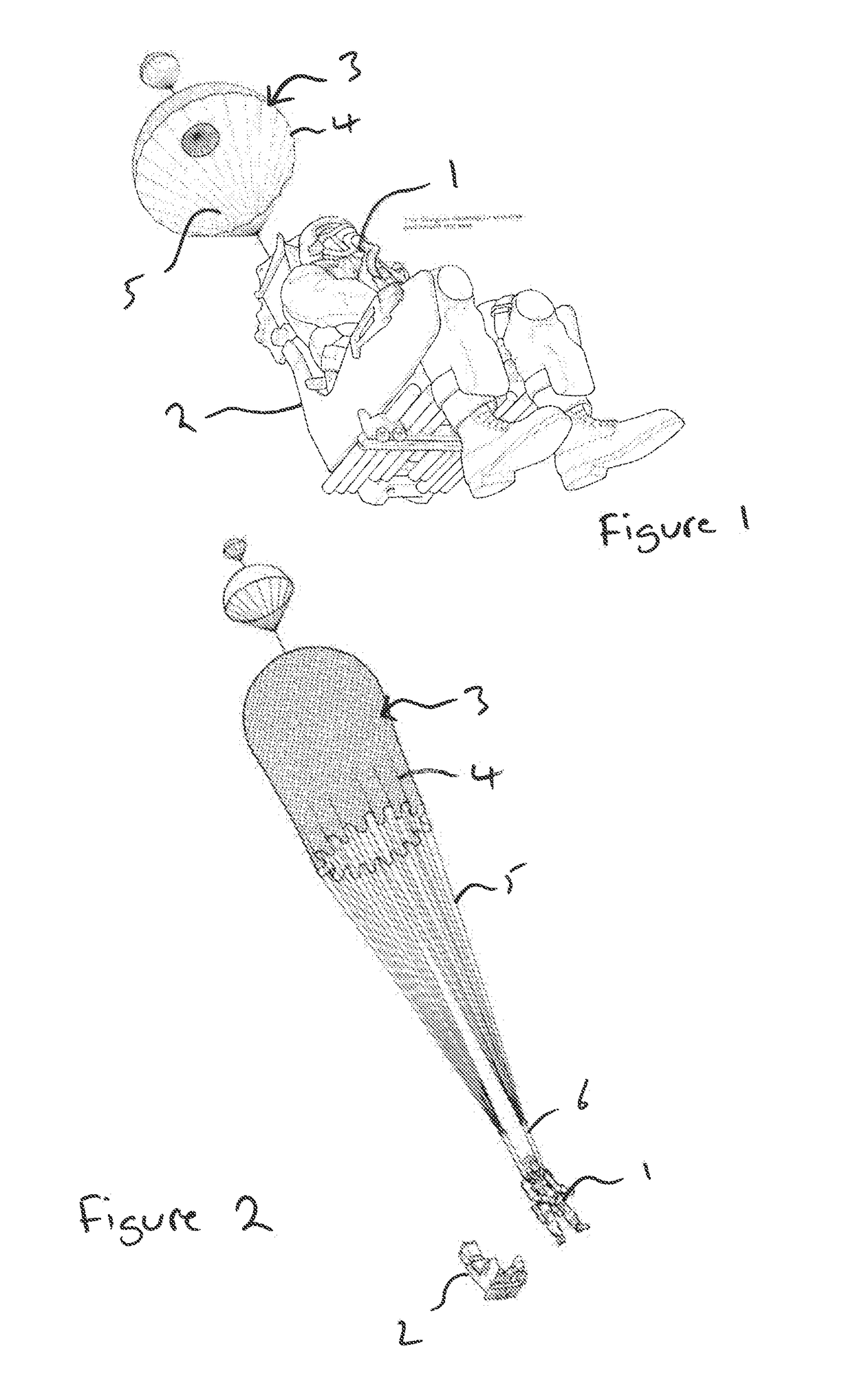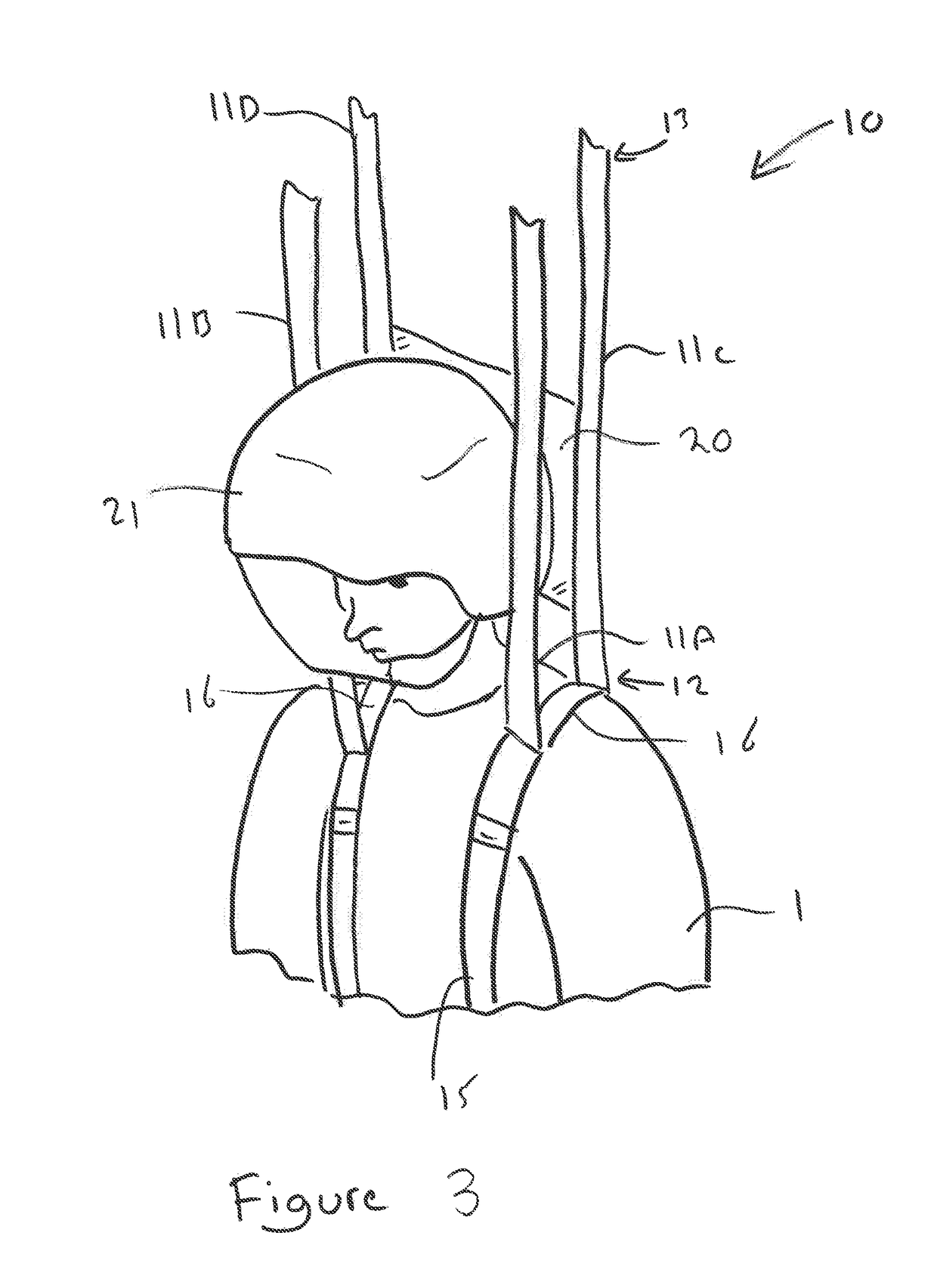Parachute
a technology of parachute and ejection device, which is applied in the field of parachute, can solve the problems of user deceleration, user neck injury, and need for rapid deceleration, and achieve the effects of increasing the chance of excessive hyperextension or hyperflexion, increasing the mass of the user's head, and increasing the for
- Summary
- Abstract
- Description
- Claims
- Application Information
AI Technical Summary
Benefits of technology
Problems solved by technology
Method used
Image
Examples
Embodiment Construction
[0029]A description of example embodiments of the invention follows.
[0030]FIG. 1 illustrates a user (pilot) 1 seated in an ejection seat 2 having ejected from an aircraft (not shown). The user 1 is secured to the ejection seat 2 by a connection such a harness. Preferably, the user 1 is wearing a body harness which is separately secured to the seat 2. A parachute 3 is connected to the harness of the user 1. The parachute 3 comprises a canopy 4 secured to a plurality of suspension lines 5 which are secured to a plurality of risers 6. The risers 6 are secured to the user's 1 harness.
[0031]As the parachute 3 is deployed, the user 1 separates from the seat 2, in a known manner, as shown in FIG. 2.
[0032]As discussed above, as the parachute deploys, the forces imposed on the user's neck can cause injury.
[0033]FIG. 3 illustrates part of a parachute 10 embodying the present invention. The canopy and suspensions lines are not shown but can take the conventional form of the canopy 4 and suspen...
PUM
 Login to View More
Login to View More Abstract
Description
Claims
Application Information
 Login to View More
Login to View More - R&D
- Intellectual Property
- Life Sciences
- Materials
- Tech Scout
- Unparalleled Data Quality
- Higher Quality Content
- 60% Fewer Hallucinations
Browse by: Latest US Patents, China's latest patents, Technical Efficacy Thesaurus, Application Domain, Technology Topic, Popular Technical Reports.
© 2025 PatSnap. All rights reserved.Legal|Privacy policy|Modern Slavery Act Transparency Statement|Sitemap|About US| Contact US: help@patsnap.com



